Complete Solutions to Comprehension of chapter GENERAL ORGANIC CHEMISTRY of Class 11 book with complete answers and questions
| Class 11 | CHEMISTRY |
| Chapter | GENERAL ORGANIC CHEMISTRY |
| CENGAGE CHEMISTRY | Comprehension |
| Number Of Questions | 20 |
| Academic Year | 2023-24 |
An organic reaction occurs by using reagents called electrophiles and nucleophiles via the formation of some reactive intermediates called carbocations, carbanions, free radicals, carbenes, nitrenes, radical cations, and radical anions.
Which of the following contains nucleophiles only ?
View SolutionAn organic reaction occurs by using reagents called electrophiles and nucleophiles via the formation of some reactive intermediates called carbocations, carbanions, free radicals, carbenes, nitrenes, radical cations, and radical anions.
Which of the following contains electrophiles only ?
View SolutionAn organic reaction occurs by using reagents called electrophiles and nucleophiles via the formation of some reactive intermediates called carbocations, carbanions, free radicals, carbenes, nitrenes, radical cations, and radical anions.
The most stable carbanion is :
View SolutionAn organic reaction occurs by using reagents called electrophiles and nucleophiles via the formation of some reactive intermediates called carbocations, carbanions, free radicals, carbenes, nitrenes, radical cations, and radical anions.
The most stable carbocation is :
View SolutionAn organic reaction occurs by using reagents called electrophiles and nucleophiles via the formation of some reactive intermediates called carbocations, carbanions, free radicals, carbenes, nitrenes, radical cations, and radical anions.
The most stable free radical is :
View SolutionAn organic reaction occurs by using reagents called electrophiles and nucleophiles via the formation of some reactive intermediates called carbocations, carbanions, free radicals, carbenes, nitrenes, radical cations, and radical anions.
The least stable carbocation is :
View SolutionCarbene intermediates are produced by the photolysis of diazomethane `(CH_2N_2)` or ketene `(CH_2 = C = O)`. They are also produced by the reaction of `CHX_3` with base or by Simmons-Smith reaction. There are two types of carbenes, singlet and triplet. They are so called due to their spin state.
Spin state of carbene is determined by using the formula :
where `S` is the sum of all electron spin numbers.
View SolutionCarbene intermediates are produced by the photolysis of diazomethane `(CH_2N_2)` or kenene `(CH_2 = C = O)`. They are also produced by the reaction of `CHX_3` with base or by Simmons-Smith reaction. There are two types of carbenes, singlet and triplet. They are so called due to their spin state.
Singlet and triplet carbene are same in :
View SolutionCarbene intermediates are produced by the photolysis of diazomethane `(CH_2N_2)` or kenene `(CH_2 = C = O)`. They are also produced by the reaction of `CHX_3` with base or by Simmons-Smith reaction. There are two types of carbenes, singlet and triplet. They are so called due to their spin state.
In which reaction, the insertion of methylene increases potential energy ?
View SolutionCarbene intermediates are produced by the photolysis of diazomethane `(CH_2N_2)` or kenene `(CH_2 = C = O)`. They are also produced by the reaction of `CHX_3` with base or by Simmons-Smith reaction. There are two types of carbenes, singlet and triplet. They are so called due to their spin state.
Which carbene is produced in the following reactions ?
 .
.
View SolutionCarbene intermediates are produced by the photolysis of diazomethane `(CH_2N_2)` or kenene `(CH_2 = C = O)`. They are also produced by the reaction of `CHX_3` with base or by Simmons-Smith reaction. There are two types of carbenes, singlet and triplet. They are so called due to their spin state.
An optically active alkene `(I)` with lowest molecular mass on hydrogenation gives optically inactive alkene, but on insertion of methylene carbene `( : CH_2)` in `(I)`, it gives optically active compound `(II)`. The compounds `(I)` and `(II)` are :
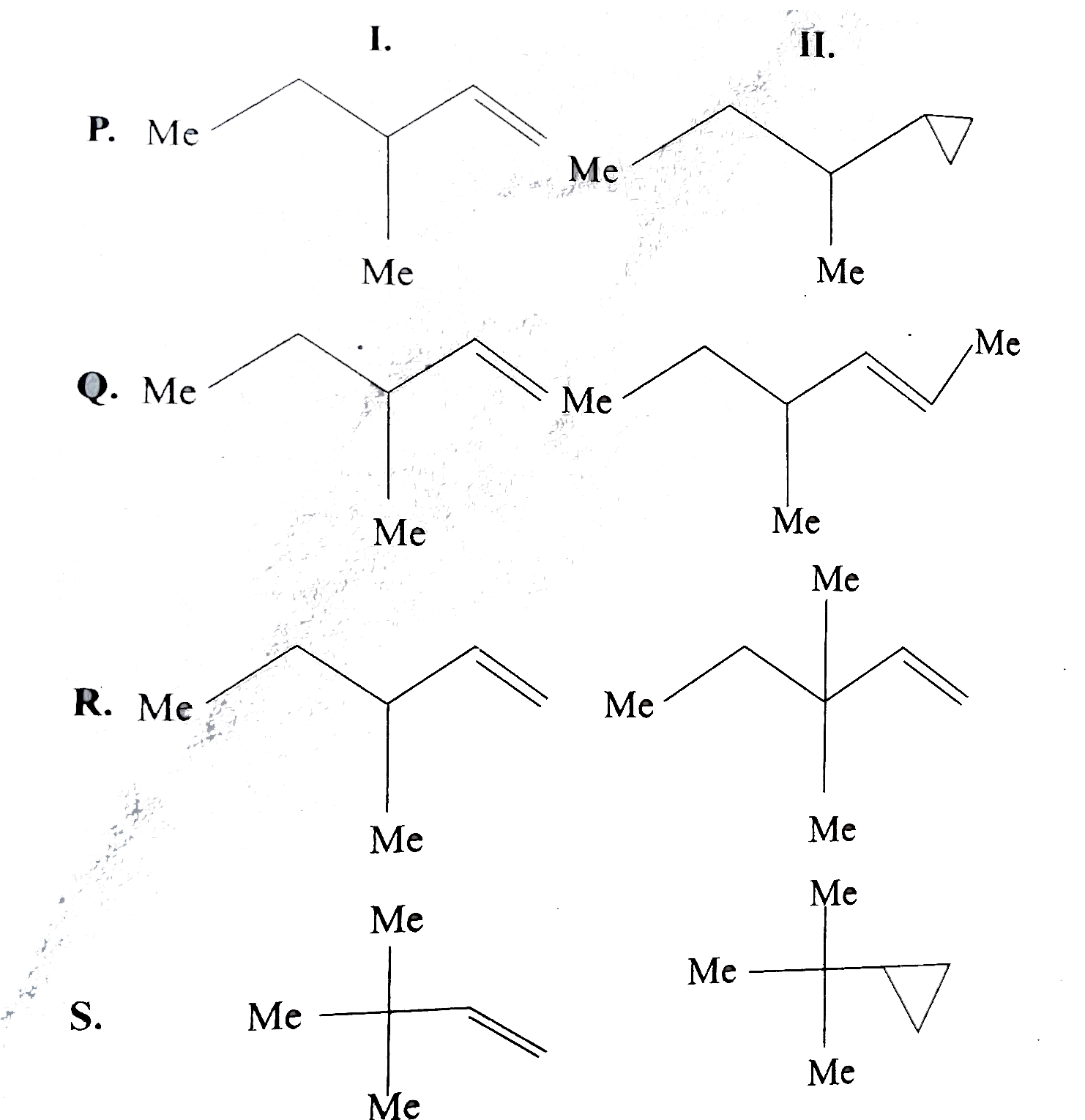 .
.
View SolutionConsider the following reaction :
 ,
,
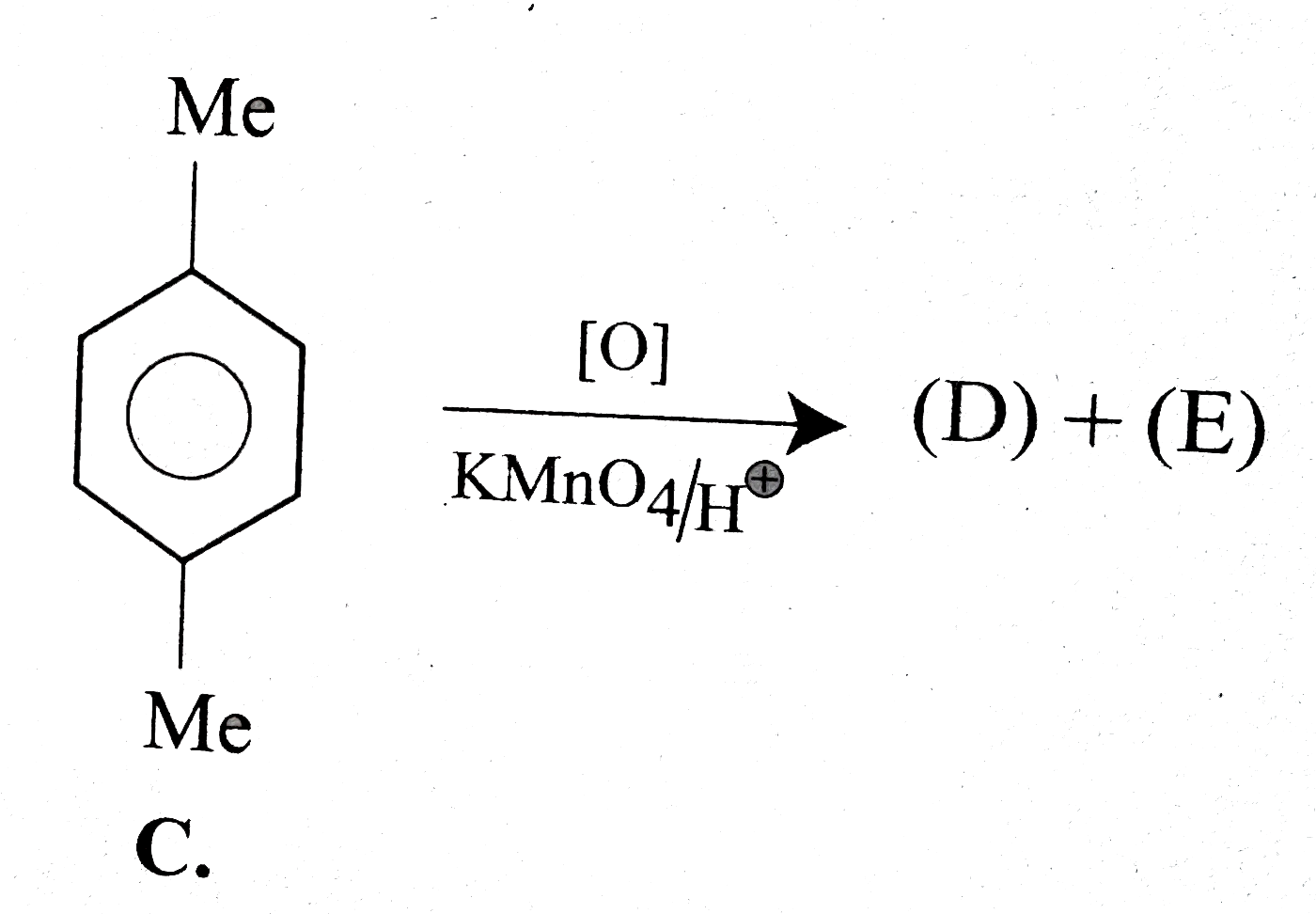 .
.
The compound `D` is an ortho-isomer and `E` is a `p-isomer. The compounds `D` and `E`, respectively, are :
View SolutionConsider the following reaction :
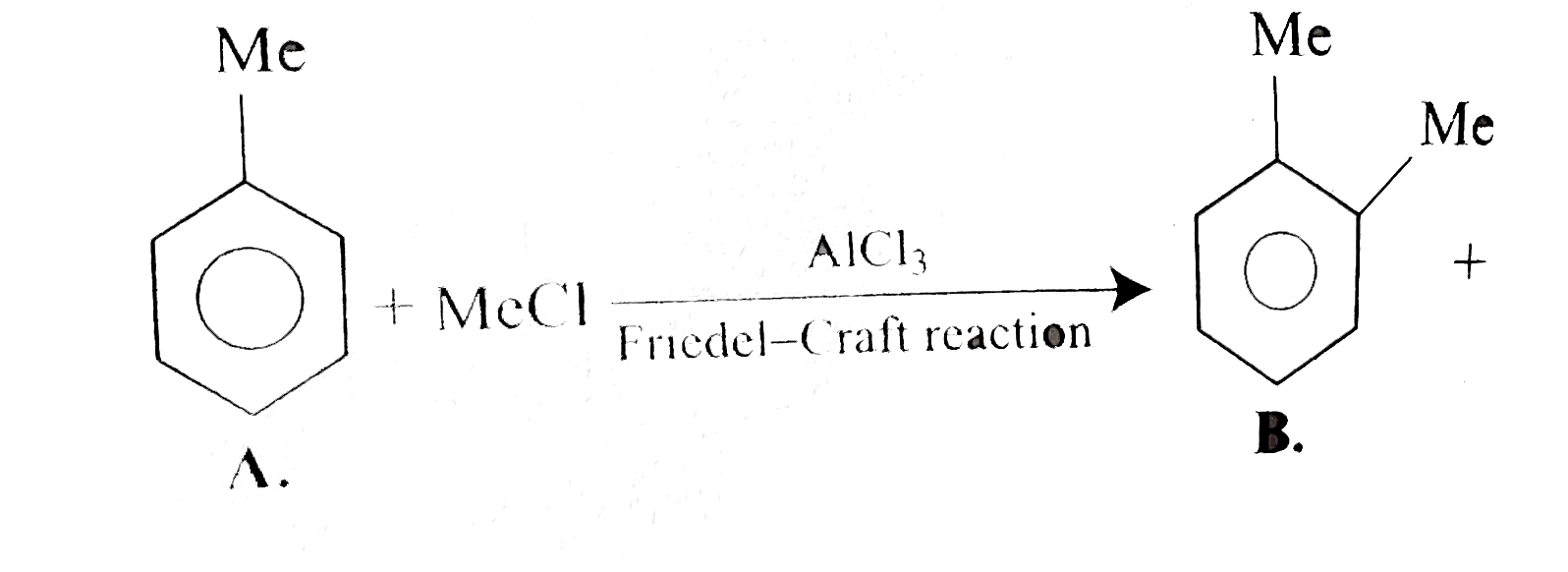
,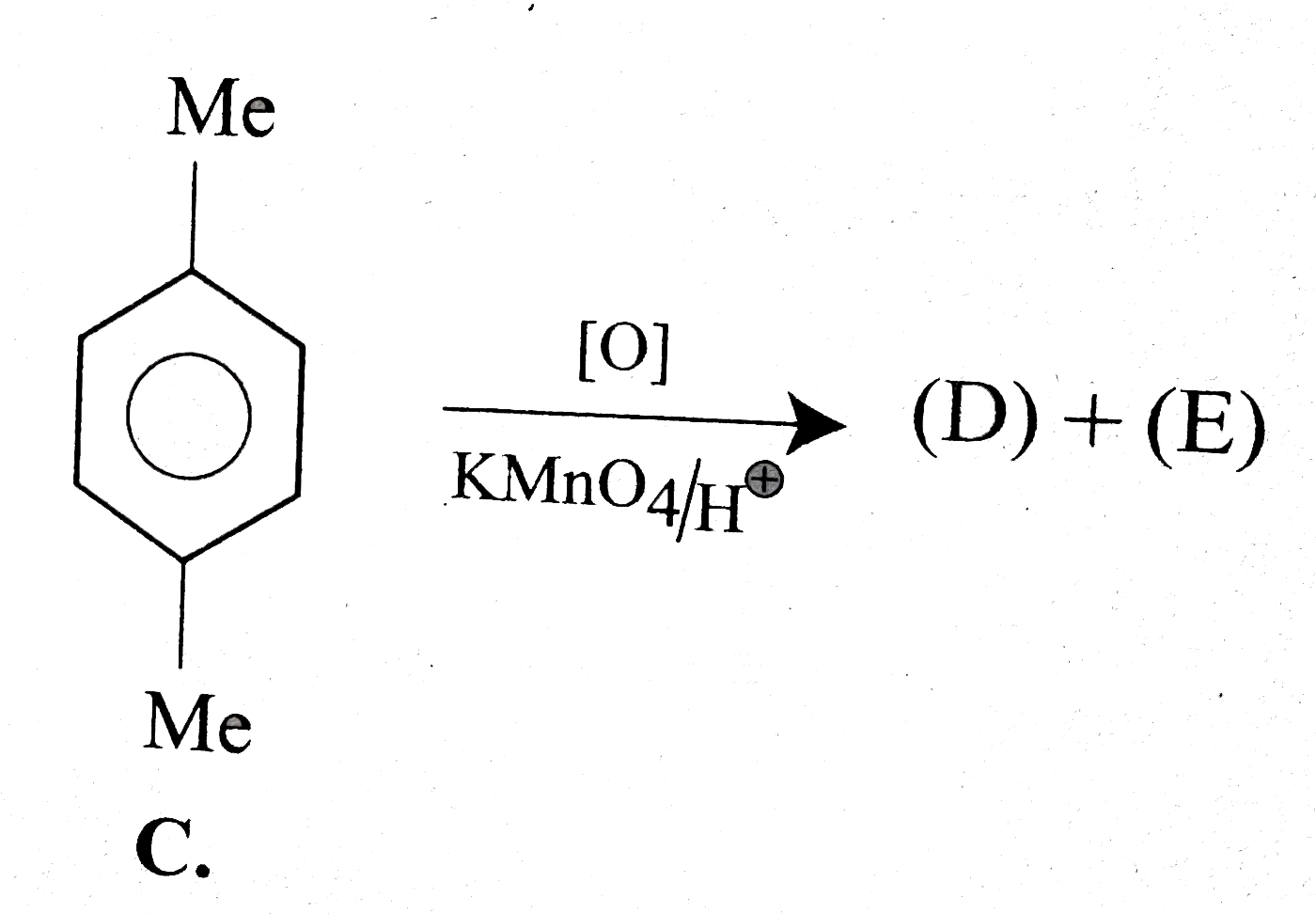 .
.
The `m-isomer` of `D` and `E` is called :
View SolutionConsider the following reaction :
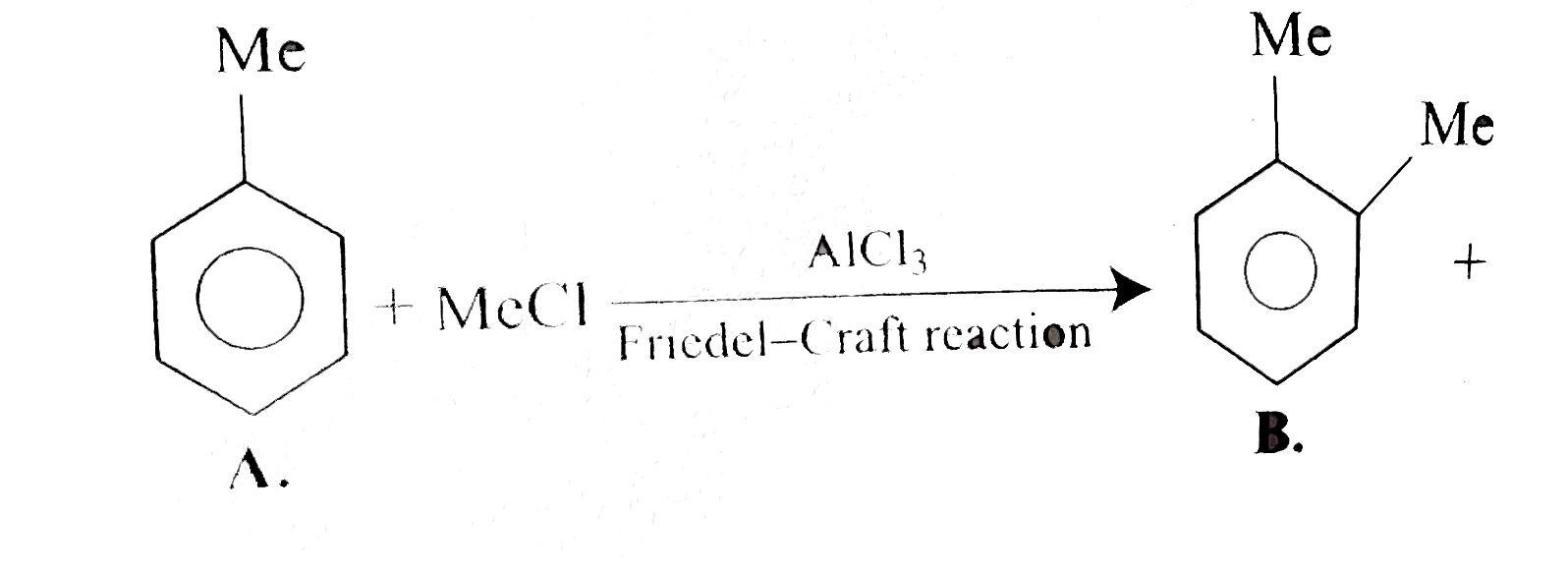 ,
,
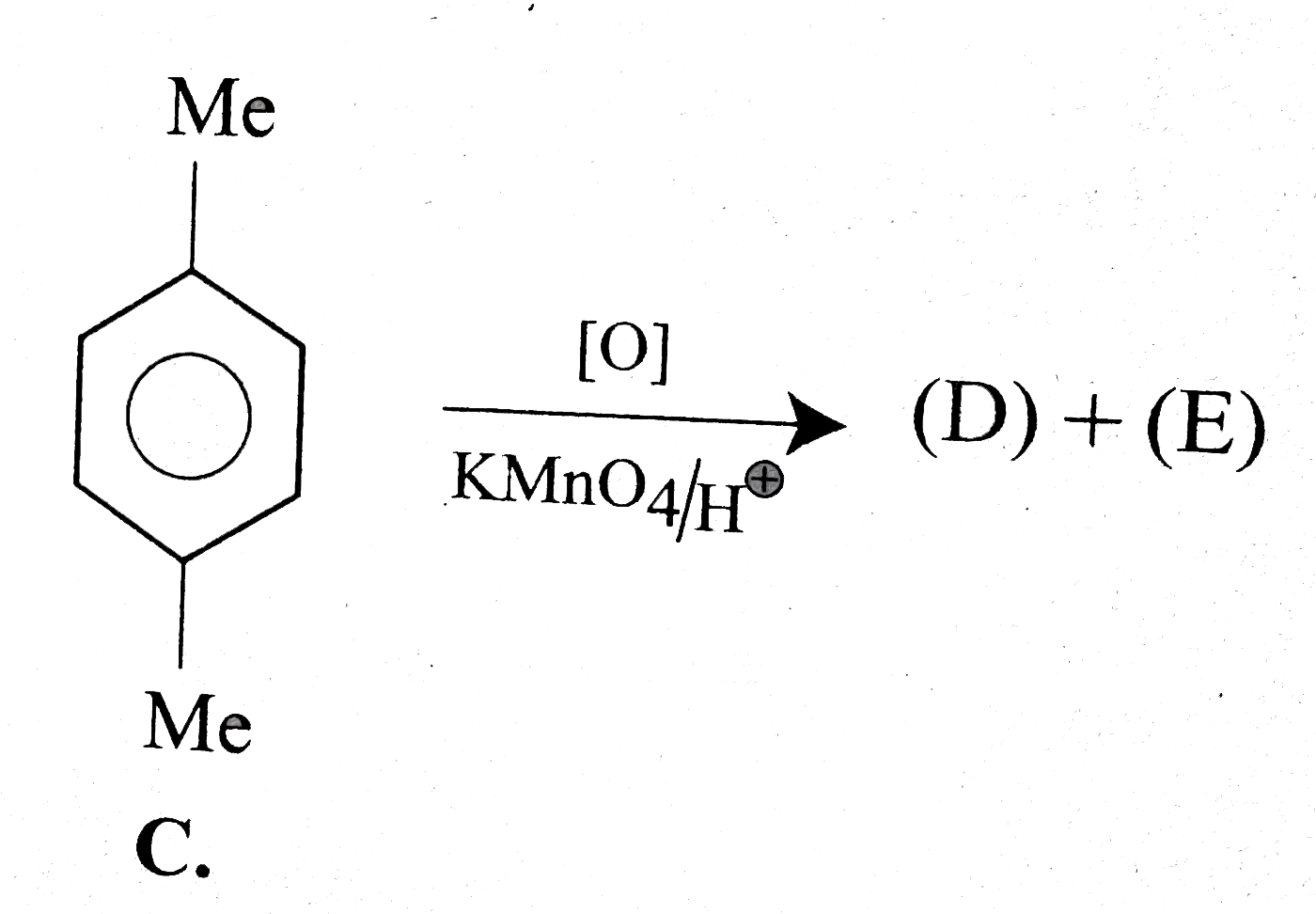 .
.
The decreasing order of acidic strengths of `(I)` phthalic `(II)` terephthalic, and `(III)` isophthalic acids is :
View SolutionConsider the following reaction :
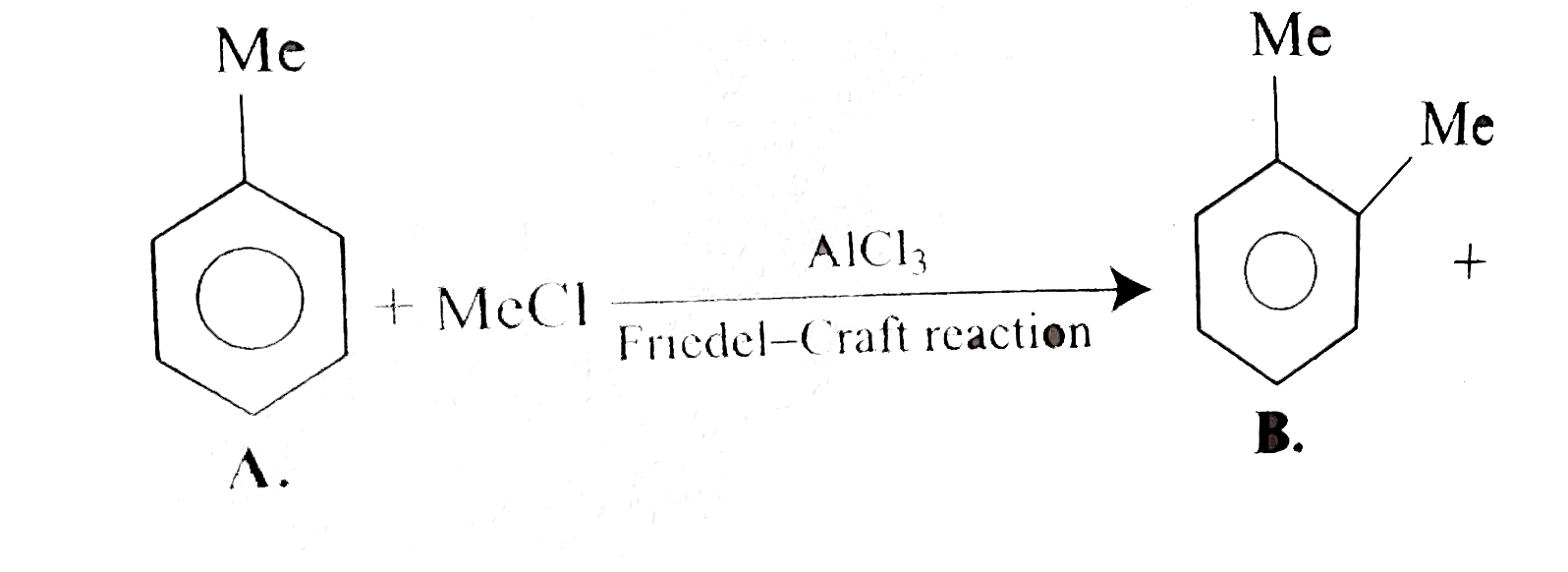 ,
,
 .
.
Which of the above three acids, `I, II`, and `III` forms anhydribe on heating ?
View SolutionConsider the Hofmann ammonolysis reaction :
`R-X +ddotNH_(3)rarr underset(1^(@) amine)(HX + RNH_(2)) overset(R-X)underset(373K)rarr`
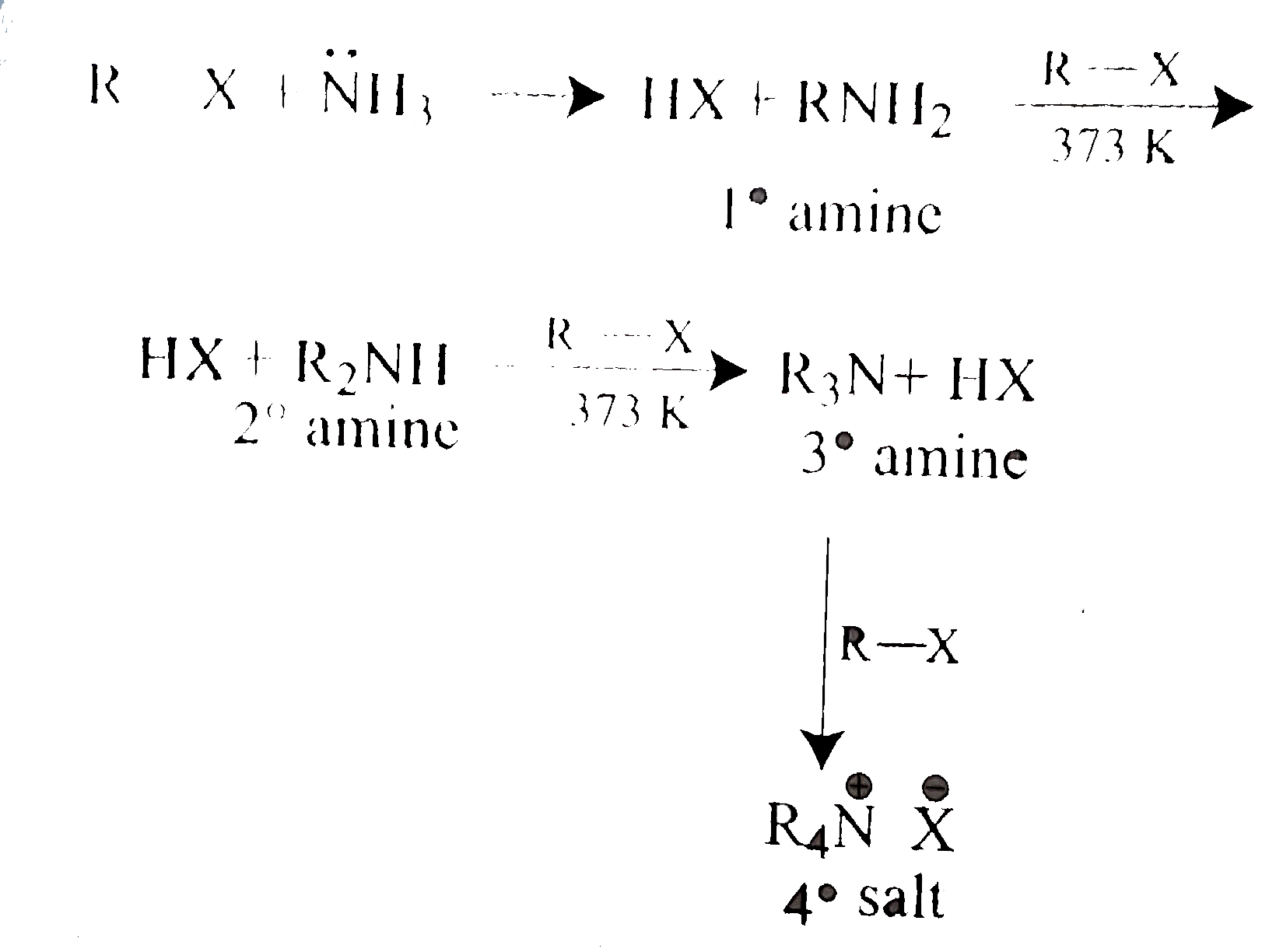
If `R = CH_3`, the correct order of basic character of `1^@` amine, `2^@` amine, `3^@` amine, and `NH_3` in aqueous medium is :
View SolutionConsider the Hofmann ammonolysis reaction :
`R-X +ddotNH_(3)rarr underset(1^(@) amine)(HX + RNH_(2)) overset(R-X)underset(373K)rarr`
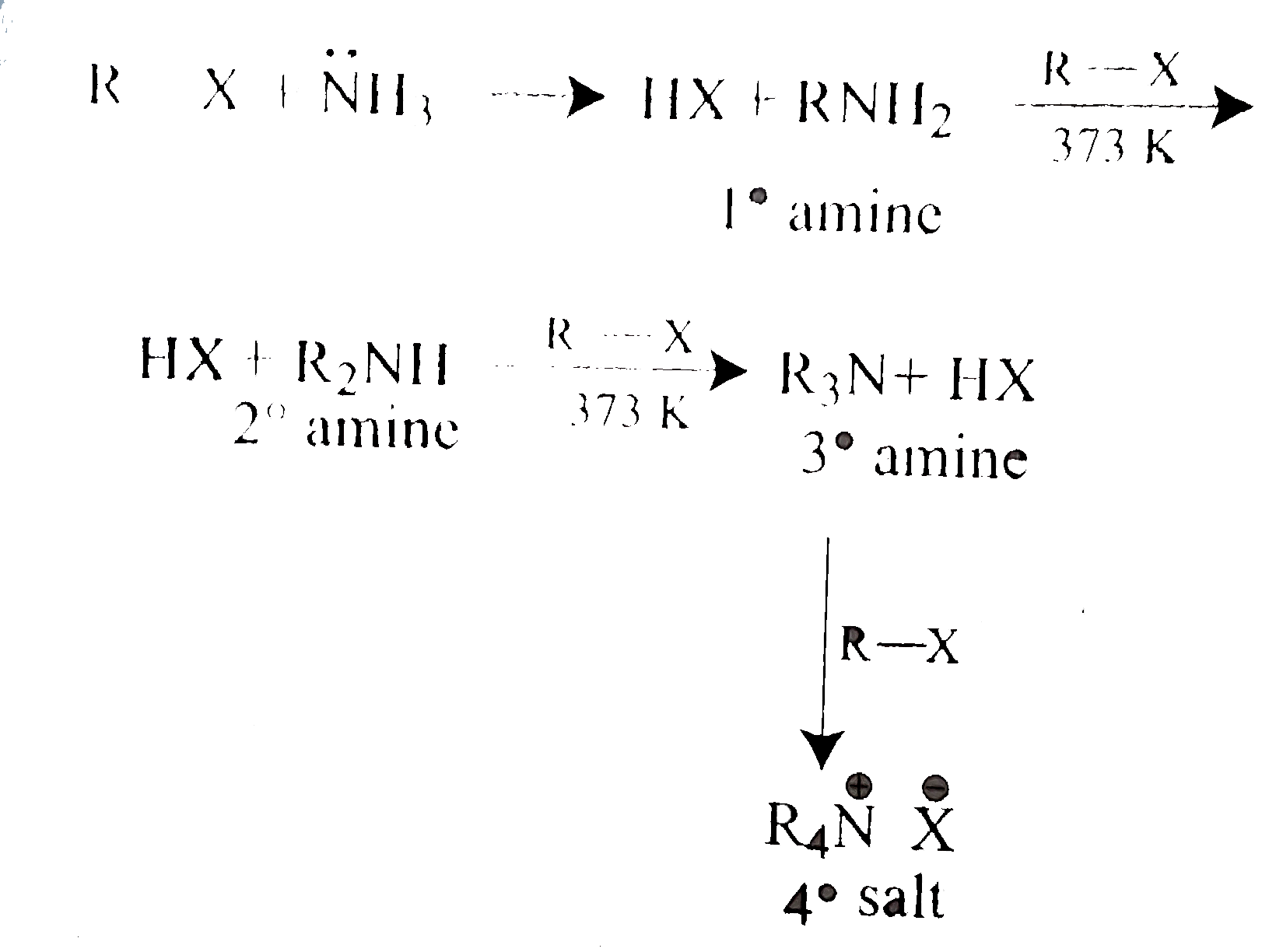
If `R = C_2H_5`, the correct of basic character of the above amines in aqueous medium is :
View SolutionConsider the Hofmann ammonolysis reaction :
`R-X +ddotNH_(3)rarr underset(1^(@) amine)(HX + RNH_(2)) overset(R-X)underset(373K)rarr`
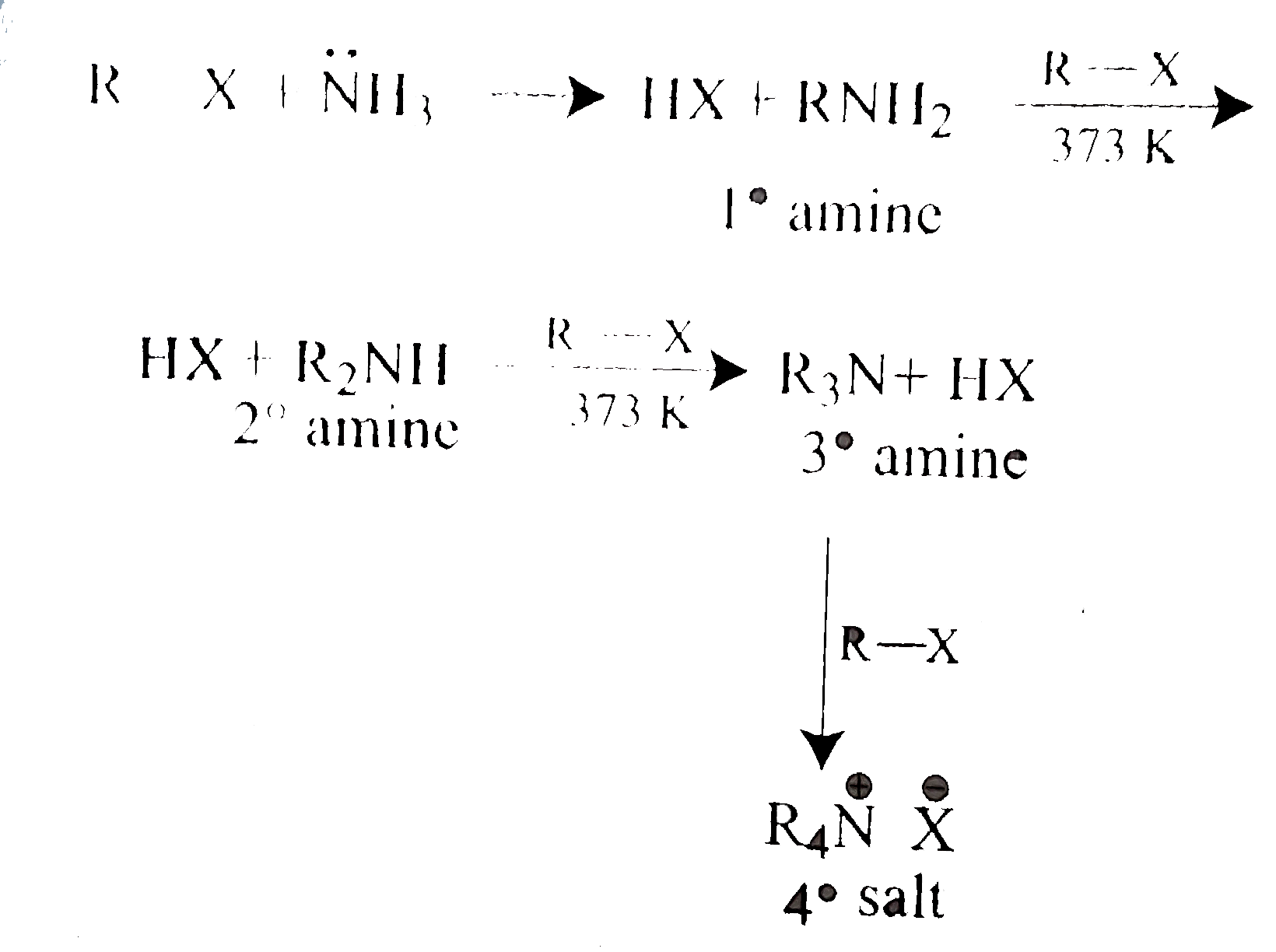
If `R = Me_2 CH-(isopropyl)`, the correct order of basic character of the above amines in aqueous medium is :
View SolutionConsider the Hofmann ammonolysis reaction :
`R-X +ddotNH_(3)rarr underset(1^(@) amine)(HX + RNH_(2)) overset(R-X)underset(373K)rarr`
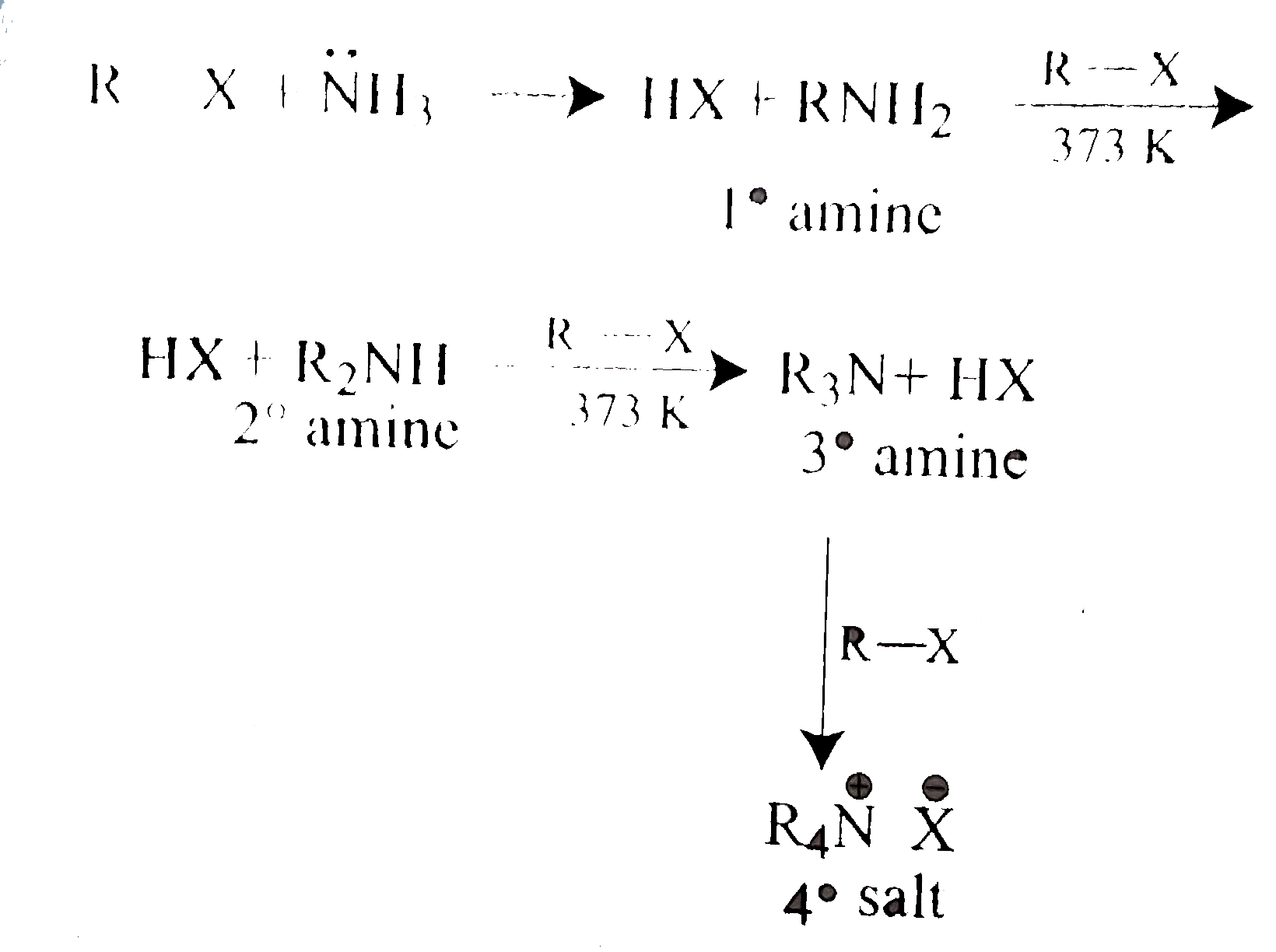
If `R = Me_3 C - (t-butyl)`, the correct order of basic character of the above amines in aqueous medium is :
View SolutionConsider the Hofmann ammonolysis reaction :
`R-X +ddotNH_(3)rarr underset(1^(@) amine)(HX + RNH_(2)) overset(R-X)underset(373K)rarr`
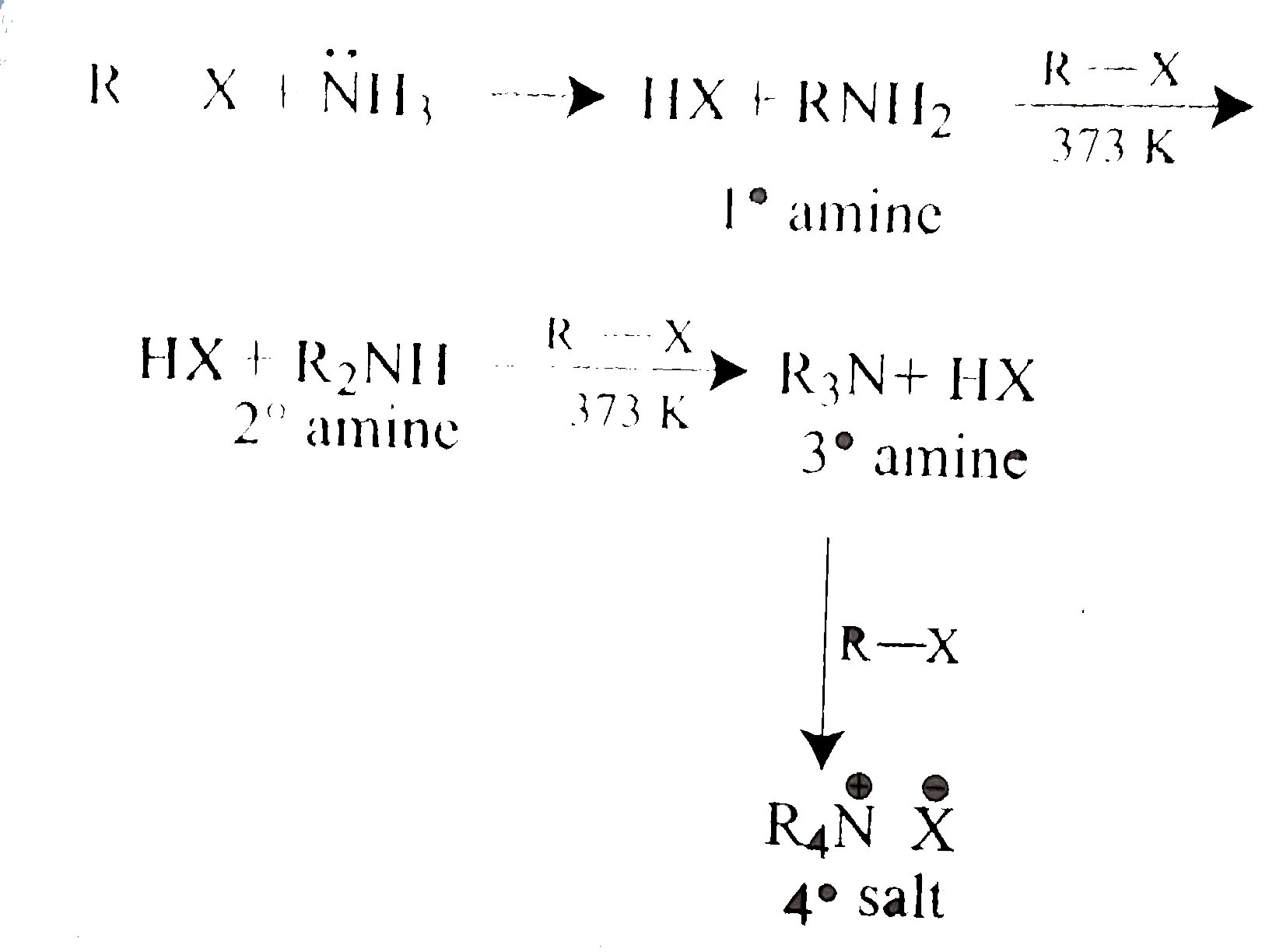
For any value of `R`, the correct order of basic character of the above amines in gaseous phase of nonpolar solvent is :
View Solution
Comprehension questions and complete solutions for chapter GENERAL ORGANIC CHEMISTRY of CENGAGE CHEMISTRY (ENGLISH) of Class 11